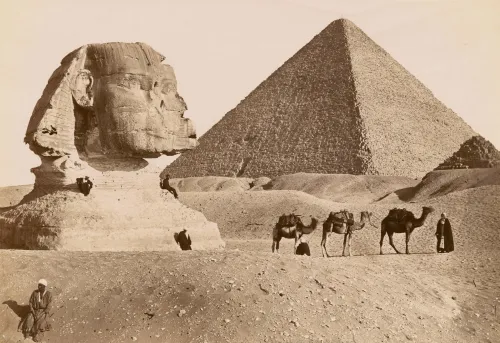Depending on who you ask, psychedelic substances are beneficial to psychiatry, a menace to society, a cure, or a gateway to another realm.
Psychedelic substances have been an integral part of human culture for thousands of years. The Greek terms “psyche” (soul) and “delos” (clear) are where the term "psychedelic" originates. These natural psychoactive substances were often used in spiritual experiences and sacred rituals to treat certain illnesses and help see the divine or commune with God.
What are psychedelics?
Psychedelic substances, a unique category of hallucinogens, possess the capacity to transform and enhance sensory experiences, cognitive functions, and energy levels. Renowned members of this group, such as LSD, DMT, mescaline, and psilocybin, share the limelight. Historically, various cultures have utilized plant-based and mushroom-derived psychedelics to evoke altered states of consciousness, a practice spanning hundreds or even thousands of years prior to the discovery of LSD.
In this article, we will do an overview of the history of psychedelics and recent developments in psychedelic research. Certain psychedelics have been studied for therapeutic purposes recently, and research in this area has shown promising results. However, due to their legal status, the recreational use of psychedelics remains controversial and heavily regulated.

The History of Psychedelic Substances
The history of psychedelics can be traced back to ancient civilizations where they were used for spiritual and medicinal purposes. In the 20th century, psychedelics gained popularity in Western culture as a tool for exploring consciousness and treating mental health disorders but psychedelic use also faced backlash and legal restrictions.
Prehistoric Use of Hallucinogens
From at least 4,000 BC, psychedelic drugs have had a profound impact on the development of some cultures and ideologies. These societies, especially those found in the Americas, mastered the use of psychoactive plants and mushrooms for therapeutic purposes or to induce altered states of consciousness. Researchers have found concrete evidence showing that people in Europe used psychoactive substances during the Bronze Age, perhaps as a component of prehistoric practices. Strands of human hair from around 3,000 years ago were found to have remnants of alkaloid compounds, which are molecules that come from plants and are known to alter perception and trigger delirium and euphoria. The hairs were discovered by researchers in the burial cave Es Càrritx in Menorca, one of the Balearic Islands off the eastern coast of Spain in the Mediterranean Sea. Ephedrine, a stimulant, was found in the hairs after a chemical examination. Atropine and scopolamine, two psychoactive substances that can cause dizziness, sensory disruption, and vivid hallucinations, were also found after analysis, according to a report published in the Journal Scientific Reports.
Ancient Cultures and Use of Psychedelics
Psychedelics may be the oldest psychopharmacological agents known to man. They have been used for thousands of years in various ancient cultures for spiritual and medicinal purposes, such as in the rituals of indigenous tribes in the Amazon rainforest or the religious practices of ancient civilizations like the Aztecs and Maya.

Ancient Egyptians
The medicinal properties of psilocybin and other entheogenic fungi by the ancient Egyptians is discussed in Stephen Berlant's study. He suggests that early strains of Psilocybe cubensis, like Egyptian White and Triple Crowns, may have been cultivated on barley by the Egyptians. Additionally, he makes the case that Osiris, an ancient god in Old Egyptian religion, might have personified these entheogenic mushrooms. Archaeological evidence is implying entheogens were employed in Ancient Egypt for religious and therapeutic purposes lends credibility to this viewpoint.
Ancient India
Since the time of the Vedic culture, Hinduism has used psychedelics. Hinduism's oldest writings, the Rigveda (written around 1500 BCE), reference ritual use of the divine hallucinogenic Soma.
Ancient Greeks
In Ancient Greece a beverage called Kykeon is most known for being ingested as a component of the Eleusinian Mysteries rituals. It is believed that the Eleusinian kykeon included a psychoactive substance that permitted consumers to experience an altered state of consciousness during the rites to facilitate interaction and comprehension with the gods.
Ancient China
Substances with psychedelic effects have been popular in Ancient China for many years, particularly during the Daoist era. The usage of psychedelic drugs is first documented in China, according to historians and archaeologists, circa 400 BCE.
Daoists investigated the use therapeutic potential of psychedelic drugs at this time for spiritual awakening and self-healing. As a result, followers of the religious cult began using specific psilocybin-containing mushrooms, herbs, and plants as a way to connect with nature or reach higher states of consciousness.
Cannabis, mescaline-containing cacti (peyote), and plant-based psychedelics like psilocybin mushrooms were the main psychoactive substances consumed during this time. They probably had some medicinal use, especially for treating mental health conditions like despair and anxiety.
Documentation of Hallucinogens
The documentation of these substances and their significance continues to be traced throughout time and indigenous cultures and civilizations.
In pre-Columbian Mesoamerica, psilocybin-containing mushrooms were used in religious ceremonies, as evidenced by archaeological findings and ancient art. In South America, the use of ayahuasca, a plant-based hallucinogen, has been documented for centuries and is still used today in traditional shamanic practices.
In Asia, the use of opium for its psychoactive effects has been recorded as early as the 15th century. Cannabis, another hallucinogen, has been used in India and the Middle East for thousands of years for medicinal and religious purposes.
In modern times, the use of hallucinogens gained popularity in the 1960s as part of the counterculture movement. Substances such as synthetic drugs such as LSD and magic mushrooms were used for their perceived ability to induce spiritual experiences and promote creativity and personal growth.
Psychedelic Revolution in the 1960s
The 1960s were a time of significant social, cultural, and political change in many parts of the world. One of the most notable movements of that era was the psychedelic revolution, which was characterized by the use of mind-altering substances such as LSD, psilocybin, and mescaline, as well as the emergence of a counterculture that rejected mainstream values and norms.
The roots of the psychedelic revolution can be traced back to the early 1950s when LSD was first synthesized by Swiss chemist Albert Hofmann. In the following years, LSD was used in psychological research and experimentation, but it was not until the mid-1960s that it became widely popular among young people who were searching for new experiences and ways of understanding themselves and the world around them.
The use of psychedelic drugs were often associated with the counterculture movement that emerged in the 1960s, which rejected mainstream values, consumerism, and political conformity. Many young people saw psychedelics as a way to break free from the constraints of society and explore alternative ways of living and thinking.
Influence of Psychedelics on Music, Art, War, and Spirituality
The impact of the psychedelic revolution was felt across many different areas of society, from music and art to politics and spirituality. Musicians such as the Beatles, Jimi Hendrix, and the Grateful Dead were heavily influenced by psychedelic experiences, and their music reflected this in both its sound and lyrics. Psychedelic art, with its vibrant colors, swirling patterns, and trippy imagery, was also a psychedelic renaissance and became popular during this time.
In terms of politics, the psychedelic revolution played a role in the anti-war movement and the civil rights movement, as many young people who were opposed to the Vietnam War and racial discrimination saw psychedelics as a way to expand their consciousness and connect with a greater sense of unity and compassion.
The psychedelic revolution also had an impact on spirituality and religion, as many people turned to Eastern religions such as Buddhism and Hinduism as a way to make sense of their own psychedelic drug experiences and find meaning in life.
However, the use of psychedelics also had its downsides, with some users experiencing negative psychological effects such as anxiety, paranoia, and even psychosis. This, along with the government's crackdown on recreational drug use back in the 1970s, led to a decline in the popularity of psychedelics. Despite this, the psychedelic revolution of the 1960s remains an important and influential cultural movement that continues to inspire new generations of artists, musicians, and spiritual seekers.

Recent Developments in Psychedelic Research
Psychedelic research has gained increasing attention in recent years due to its potential therapeutic effects in treating various mental health conditions such as depression, anxiety, addiction, and PTSD. Here are some recent developments in psychedelic research:
-
FDA Approval for Psychedelic-Assisted Therapy: The US Food and Drug Administration (FDA) granted Breakthrough Therapy Designation to MDMA-assisted psychotherapy for the treatment of PTSD in 2017, paving the way for Phase III clinical trials. Additionally, psilocybin-assisted therapy has received breakthrough therapy designation from the FDA for the treatment of the major depressive disorder.
-
Increased Investment in Psychedelic Research: In the last few years, there has been a surge in investment in psychedelic research by private companies, universities, and non-profit organizations. This increased funding has allowed for more rigorous scientific studies and clinical trials on the potential therapeutic applications of psychedelic substances.
-
Growing Acceptance in Mainstream Medicine: Psychedelic therapy is gaining acceptance in mainstream medicine, with leading institutions such as John Hopkins and Imperial College London establishing dedicated psychedelic research centers. Additionally, the American Psychological Association recently established a division devoted to psychedelics and psychedelic-assisted therapies.
-
Psychedelic Decriminalization: Several cities and states in the US have decriminalized the possession and use of psychedelic substances, including psilocybin, ayahuasca, and ibogaine, for personal use. This has led to a greater awareness of the potential benefits of these substances and has opened up opportunities for further research.
-
New Research Findings: Recent studies have shown promising results for the use of psychedelic substances in treating depression, anxiety, addiction, and PTSD. For example, a study conducted by John Hopkins found that psilocybin-assisted therapy significantly reduced symptoms of depression and anxiety in cancer patients. Another study found that MDMA-assisted therapy was highly effective in treating PTSD in veterans and first responders.
Overall, these recent developments have helped to increase awareness and understanding of the potential benefits of psychedelic substances in treating mental health conditions, and have opened up new opportunities for research and clinical applications.
New Uses for Psychedelics
As we previously mentioned, psychedelics, such as LSD, psilocybin, and DMT, have been used for centuries for spiritual and therapeutic purposes. In recent years, there has been renewed interest in exploring the potential medical and therapeutic applications of these substances. Here are some of the new uses for psychedelics:
-
Treating mental health disorders: There is growing evidence that psychedelic-assisted therapy can be an effective treatment for a range of mental health disorders, including depression, anxiety, post-traumatic stress disorder (PTSD), and addiction. Studies have shown that these substances can help patients overcome long-standing psychological barriers and improve their emotional well-being.
-
Enhancing creativity and problem-solving: Psychedelics have been used by artists, writers, and musicians to enhance creativity and facilitate problem-solving. Research suggests that these substances can help individuals break out of habitual thought patterns and engage in more divergent thinking.
-
Spiritual exploration: Psychedelics have been used for spiritual exploration for centuries. Studies have shown that these substances can induce mystical experiences and feelings of interconnectedness with others and the universe. Some individuals use these substances to connect with their spiritual selves or to explore questions about the nature of reality.
-
Improving end-of-life care: Psychedelic-assisted therapy has shown promise in improving end-of-life care for terminally ill patients. Studies have found that these substances can help patients cope with anxiety, depression, and existential distress associated with the end of life.
-
Boosting physical performance: Some athletes and fitness enthusiasts have experimented with microdosing psychedelics to enhance their physical performance. Although there is limited research on this topic, some studies suggest that these substances can increase focus, reduce fatigue, and improve endurance. It's worth noting that while there is promising research on the potential benefits of psychedelics, there are also risks associated with their use. It's important to approach these substances with caution and knowledge.
Therapy and Mental Health Disorders
Psychedelic therapy is a form of psychotherapy that uses psychedelic substances, such as psilocybin, LSD, or MDMA, to facilitate psychological healing and growth. This type of therapy has shown promising results in the treatment of certain mental health disorders, particularly those that are difficult to treat with traditional methods.
For example, studies have shown that psychedelic therapy can be effective in treating depression, anxiety, and post-traumatic stress disorder (PTSD). It has also shown potential in treating addiction and end-of-life anxiety in patients with terminal illnesses. The mechanism of action of psychedelic therapy is not fully understood, but it is believed to involve changes in brain function and connectivity, as well as psychological processes such as increased self-awareness, emotional release, and insight.
It is important to note that psychedelic therapy is not a cure for mental health disorders. Rather, it is a treatment modality that can help individuals manage symptoms and gain a greater sense of well-being. In addition, psychedelic therapy is not appropriate for everyone and should only be administered under the guidance of a trained and licensed therapist.
Furthermore, while psychedelic therapy has shown promise in certain areas, more research is needed to fully understand its potential benefits and risks. It is important for individuals to carefully consider their treatment options
Potential for Treating Addiction to Some Psychoactive Substances
There is growing interest in the potential of psychedelics for treating addiction to some psychoactive substances. Psychedelics such as psilocybin, LSD, and ibogaine have shown promise in clinical trials for their ability to reduce cravings and provide a new perspective on addiction.
One of the ways psychedelics may work in treating addiction is through a shift in perspective. This can help individuals break out of old patterns of thinking and behavior and gain a new perspective on their addiction.
Studies have shown that psilocybin can be effective in treating alcohol and tobacco addiction, while LSD has been shown to reduce alcohol consumption in some individuals. Ibogaine, a powerful psychedelic from Africa, has shown potential in treating opioid addiction, although it is not currently approved for medical use in the United States.
It is important to note that while the potential of psychedelics in treating addiction is promising, more research is needed to fully understand their effectiveness and safety.
Conclusion
In conclusion, the use of hallucinogens has been documented throughout human history, with various cultures using these substances for spiritual, medicinal, and recreational purposes. From ancient Mesoamerica to modern counterculture movements, the use of these substances has held significant cultural and social significance.
Despite their cultural significance, the use of hallucinogens has been associated with risks and concerns. The criminalization of these substances has led to associated dangers, including a thriving black market and associated risks of criminal activity.
Additionally, the use of these substances can be dangerous if not used properly, and some have been associated with long-term mental health effects.
However, recent research into the therapeutic potential of hallucinogens has shown promise. Studies have suggested that these substances could be used to treat a variety of mental health conditions, including depression, anxiety, and addiction. Furthermore, ongoing research may provide further insights into the therapeutic potential of these substances.
The use of hallucinogens for spiritual purposes is well-documented in various cultures, and the significance of these experiences is still recognized today. Many individuals report profound spiritual experiences while under the influence of hallucinogens and other psychedelics, leading to increased feelings of connection, unity, and transcendence.
The use of these substances for medicinal purposes has also been documented throughout human history. Traditional medicine practices in various cultures have used these substances for their perceived healing properties, and recent research has confirmed their potential therapeutic benefits.
The potential therapeutic benefits of hallucinogens are promising. Research has suggested that these substances could be used to treat a variety of mental health conditions, including depression, anxiety, and addiction. Furthermore, ongoing research may provide further insights into the therapeutic potential of these substances.
Overall, the use of hallucinogens has held significant cultural and social significance throughout human history. While their use can be risky and must be approached with caution, ongoing research may illuminate their potential benefits and risks. Furthermore, the continued recognition of the spiritual significance of these experiences suggests that the use of hallucinogens will continue to be a significant aspect of human culture and history.

Vivien Freeflow · 4/18/2023

